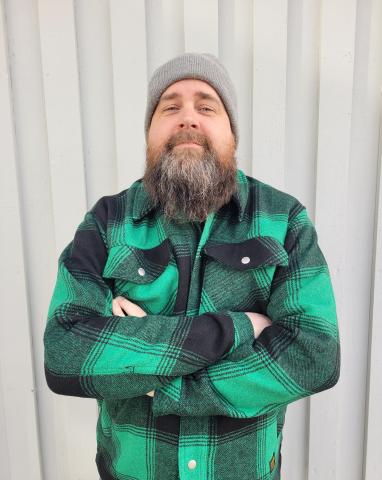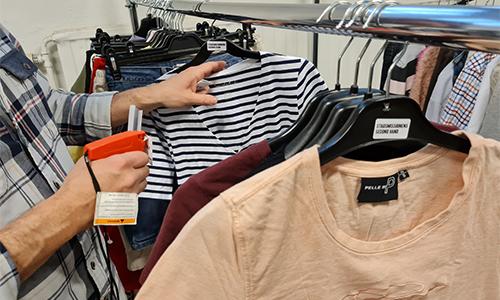The NGO Perspective on People and Waste
A broader perspective on what sustainability truly means.
— Our approach to second-hand garments is always about creating opportunities to support vulnerable people. We aim to help them find their own livelihoods through socially sustainable work. From collection to our e-shop, everything we do creates jobs, says Linus Bergström, Operations Manager at Stadsmissionen second-hand in Gothenburg. Stadsmissionen is an NGO that serves the Gothenburg region, including Borås.
A personal touch
At Stadsmissionen second-hand, it’s all about people. From collection to distribution, they focus on personal interactions. When clothes are donated, the process is hands-on. Collection points are usually located at the second-hand stores, where staff personally meet the donors. The organisation only has two unmanned collection boxes, which are rarely used.
— We prioritise being present at collection sites because that personal connection is vital to us. It also allows us to address any issues before the clothes reach our sorting centre. The best sorting happens when the donors do it themselves, Linus tells us.
Once collected, the clothes are weighed and sorted at Stadsmissionen’s second-hand collection centre in Gothenburg. Usable clothes are first distributed to those in need, and secondly, sold in their second-hand stores.
Key collaborations
For garments that can’t be sold in stores, Stadsmissionen offers alternative routes. The third option is to sell them by weight at a designated Stadsmissionen second-hand store in a Gothenburg suburb. The fourth step involves selling the textiles through the Stadsmissionen Material Bank, where designers and organisations like the Way Out West festival purchase them for upcycling or remaking projects.
— We strive to find a use for everything we collect. As a last resort, we collaborate with Humana to export textiles for aid work abroad. Nothing is incinerated, Linus emphasises.

How Stadsmissionen avoids incineration.
- 1. Clothes are distributed to those in need.
- 2. They are sold in second-hand stores.
- 3. Unsold clothes are sold by weight at a designated second-hand store.
- 4. Sold for upcycling and remake at Stadsmissionen Material Bank.
- 5. Remaining textiles are sold to larger NGOs like Humana, often for aid abroad.
— The best recycling happens locally on a small scale, and in a variety of ways, Linus points out.
Stadsmissionen continually evolves its collaborations. For example, the organisation continues to develop its operations in Borås, West Sweden’s second-largest city.
— Collaboration with municipalities is key. We aren’t competitors; instead, we offer more than just textile collection and recycling, he says.
Stadsmissionen hopes that municipalities continue to cooperate and support their initiatives, leveraging Stadsmissionen’s established infrastructure.
— Non-profit organisations are essential to textile waste collection as we can provide services that society at large cannot.
Making people sustainable
— Our main goal behind collecting and selling second-hand garments has always been a social one. We strive to adapt our operations to meet the needs of people. We have a dual focus on sustainability – for both textiles and people. Not only do we employ vulnerable individuals, but we also create conditions for them to re-enter the mainstream job market, Linus Bergström concludes.
